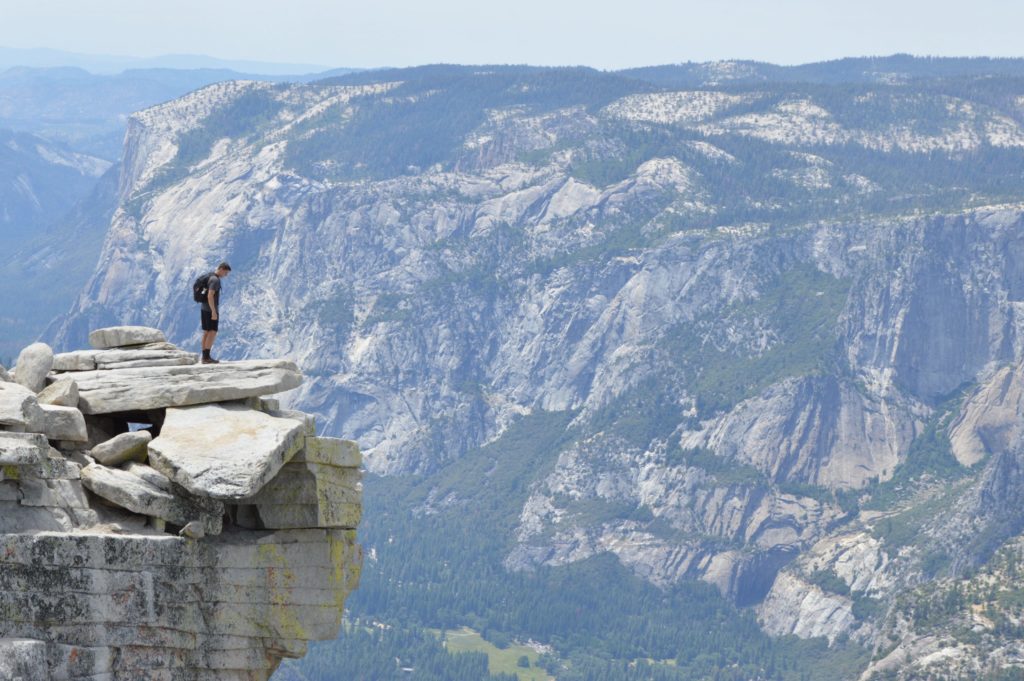
Fear of heights? Is it normal?
Does a friend or a relative have this situation? Are we humans genetically fearful of heights?
The answer is always yes. All human beings are afraid of heights. Among all these people, hikers are also scared of heights, and anyone who says the fear is not there is lying or should see a doctor. The significant difference is that a mature hiker is aware, understands, and above all, uses fear as fuel.
Because many people do not understand it, fear can stop them from reaching goals. To control the fear of heights, you have to identify its source and understand where it is coming from.
We can separate fear of heights into two categories: fear of heights, a normal function of our brain meant to protect us, and fear of falling which is actually fear of accidents, fear of hurting yourself.
The main difference between these two types is the moment they appear: fear of heights appears during a tour, in a situation you perceive as dangerous. In such a situation, as a protection system, the brain is focused on what might go wrong, and you will start to sweat, shake, get palpitations, and feel dizzy. The fear of falling, of hurting yourself, appears before a tour. The brain remembers or imagines dangerous situations and stops you from having the adventure you want.
On a physical level, fear of heights appears when there are no fixed points left or right, and you do not see anything close in front of your eyes. The feeling of dizziness is just a message resulting from this protection system because the brain can’t perceive anything else.
If we want to bypass our protection system, taking pills is not the solution. Think of everything as a process in which you constantly have to use your brain in the “unfriendly” environment. Make conquering your fear a long-term objective and continuously do something in that direction.
To reach your goal, first, you have to know your actual condition because if you don’t know your level, it will be hard to take the necessary steps. Imagine that you want to drive to Berlin and don’t know where you are. Would you move to the West or the East?
In our case, understand how hikes are marked by informing yourself from this article about the Swiss (SAC) Hiking Scale: T1 to T6 (T1 has almost no danger and T6 is extremely dangerous) and evaluate your present state. Understand on which hikes from that scale you feel more comfortable.
For example, now you feel safe doing T2 hikes. Start with a few T2 hikes with some portions of T3. Continue your progress by doing ten T3 hikes for your brain to get used to the new requirements.
After you feel confident, do ten T4 hikes to help get your brain used to these new challenges, and the most important message that you give to your brain is… you did it, and you survived. Later on, you can go on a hike with some small sections of T5, then add some more technical sections, and in the end, you will be able to do T5 hikes on your own, without external support. It is a safe place.
Making your progress visible helps, so record each hike. In the short term, you will get small quantities of dopamine, the motivation hormone produced by our brain when we accomplish something, and in the long term, you will have a big picture of our progress. That helps if you’ll feel unmotivated or insecure, so you will be able to look at your progress and get your confidence back.
Everything is about building your mental power: How do you eat an elephant? Piece by piece! And the Bavarian version: How do you eat wurst? How do you eat salami? Slice by Slice.
The other type of fear is fear of falling, and it appears in our childhood or when we assisted a traumatic experience.
Just ask yourself these questions to understand if the fear is justified or unjustified or if the fear is real or not.
– Am I the first one on this route, or was someone else here before?
– Could I be wrong about it?
– Is it possible to be different than I anticipate?
– What should happen so I don’t feel fear anymore?
– What should happen to feel safe?
Plan your hike rigorously to eliminate all significant uncertainties. Consider your route, weather, equipment, physical condition, and the other participants’ fitness, be sure you know how to navigate (map or GPS), inform yourself about some exit or return points, and bring enough food and beverages. In addition to these questions, eliminate stress produced by the fear of the unknown.
To conquer the fear of heights and successfully reach your objectives, you must understand the close connection between your body, thoughts, and emotions.
Now and then do a body check to be aware of your state:
– How is my breath?
– What is my body posture?
– What thoughts are in my mind right now?
– Am I hungry or thirsty?
– How is my energy level?
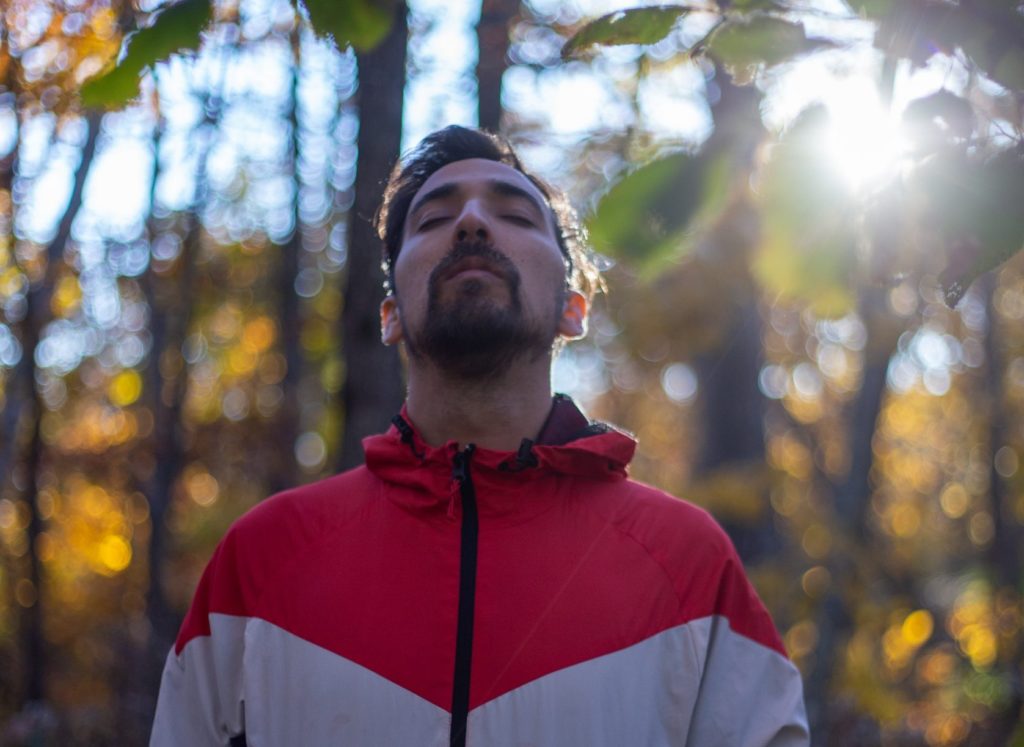
Breath
When we are afraid, our breath is faster. The body is tenser, our senses amplify a lot, the oxygen level from your brain changes, and your judgment is affected.
Breath control means conscious breathing, and you should be aware of it also when you are not in stressful moments. To have constant breathing, hike with a steady tempo. For example, when you reach a steep section, do not approach the route directly, but try to zigzag as much as possible your ascent.
With the help of breath, you can also stabilize your tempo, and these two breathing methods could be used on your hikes.
Breathing method 1. The time of exhaling should be double compared with the time you inhale. Three seconds IN, 6 seconds OUT. When you inhale, count from 1 to 4. When you exhale, count from 1 to 7. By breathing consciously, the focus switches from the danger to breath.
Breathing method 2. You stay focused on a cloud and imagine that you push the cloud with your breath. Be sure to take deep breaths and use this method for at least two minutes to notice results.
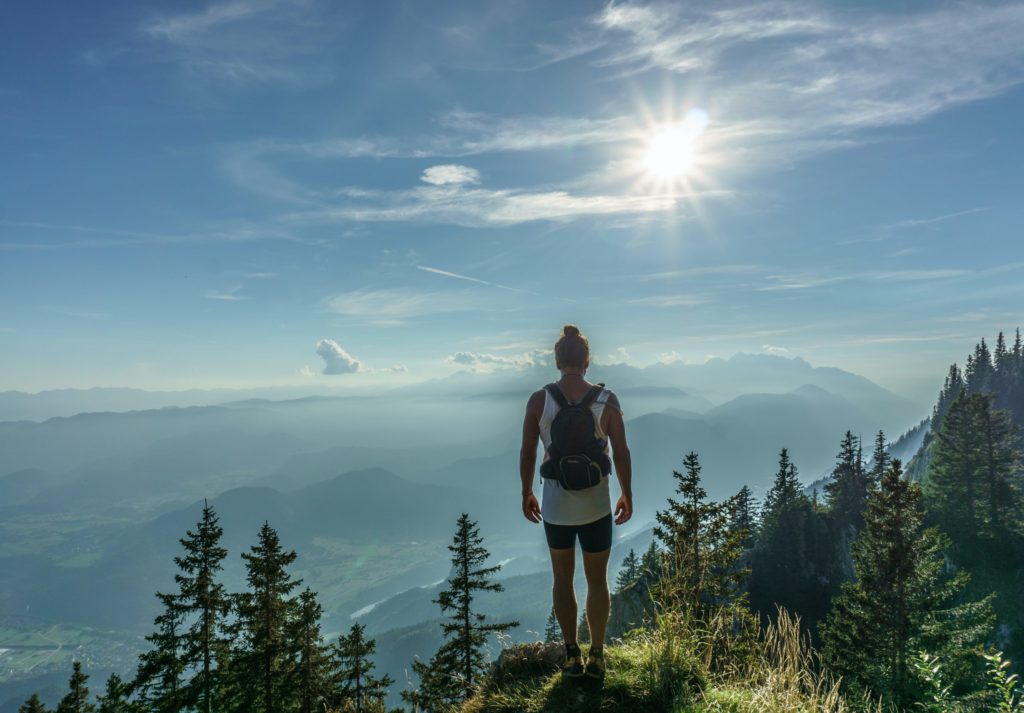
Body posture
In difficult situations, we easily notice a change in our body posture: the muscles tense, the gravitational point moves to the back (we instinctively put our hands in front to protect our heart and lunges), and the movement coordination reduce.
The main idea is to be aware of your body posture. When we notice that our muscles are tense, we should relax them. As an effect, the gravitational point becomes more stable, and the focus will turn from the danger to our body posture.
One technique to improve your state is the following: “If you can fake it, you can make it!” When tired, you usually look on the ground, with your head and shoulders down. To change this state, stay for two minutes with your head high; look up and straighten your back and shoulders. Your body will transmit a different message to your brain, and your state will quickly improve.
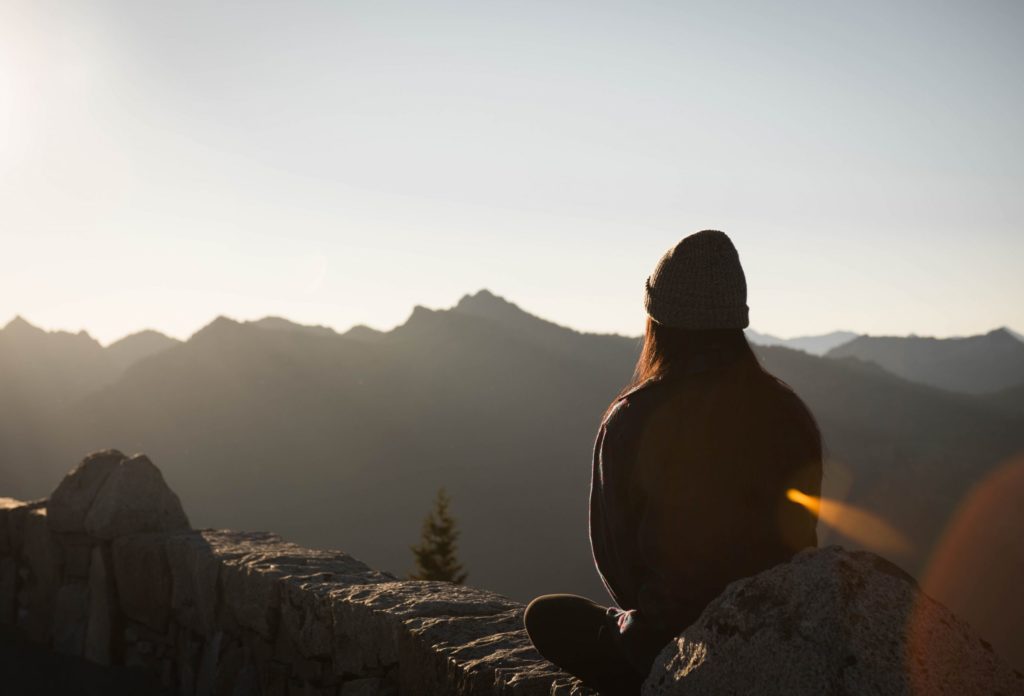
Thoughts – how to limit your unproductive thoughts
In a risky situation, your thoughts spiral around the perceived danger, which means you won’t have much control of your mind. The fear will arise, and you can go up to panic or panic attacks. Additionally, your perception and your tactile sense will be limited, and you will no longer be able to hear other noises or sounds.
When you plan a new route, search for two different descriptions. Each author described the route from their own point of view. What was dangerous or difficult for somebody cannot necessarily mean that it is difficult for someone else.
You can change the direction of your thoughts using one of these techniques because people cannot consciously think about two things simultaneously.
Visualization technique:
Start visualizing positive things or experiences to make them familiar to your brain. You can find examples with already achieved goals or even imagine new things. After we close our eyes, the brain does not know the difference between fantasy and reality, and in our mind, it is always present time.
Breathing technique: You focus on your breath for 5 minutes and count the breaths. If a thought intervenes in your counting, keep in mind the number and start over.
In the beginning, it might be challenging, but after a while, your focus will improve, and you can focus on yourself for 10, 15, or 20 minutes.
You can also do this exercise while waiting in a traffic jam, in a train station or why not, in the line at the supermarket!
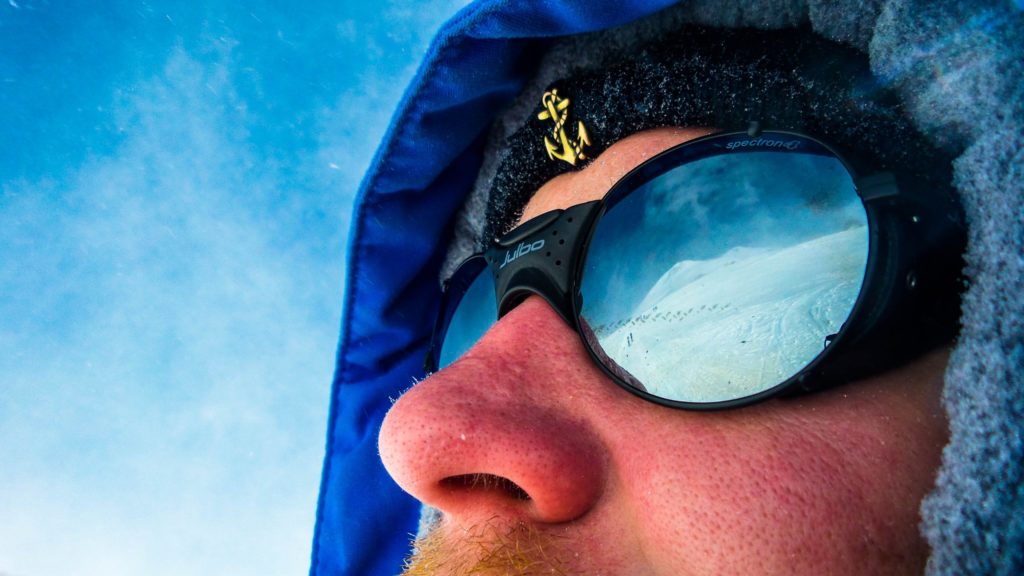
Being hungry or thirsty
If we are peaceful, our bodies are calm, and our minds are clear. If we are hungry, a lot of energy is lost because subconsciously, we think about food and how to get it.
To keep your body relaxed, make five minutes break for every hour you hike, drinking breaks, eating breaks, and, why not, photo breaks. Do these breaks on flat terrain because, after a pause, it takes some time until you re-enter hiking mode, so make it easier and start from a smooth position.
Be careful and always stay hydrated: only 20% of loss of fluids can influence 70% of our performance.
Energy level – Do I feel tired? What is my stress level?
Being tired or rested influences the way we evaluate reality, and the difference between a good and a lousy hike is given only by our perception.
When we are tired, our brain transmits signals to protect our resources (energy). Each of these signals raises the level of stress and carries a message to our brain: we are in danger.
To reduce the stress level, you can consider some of these tips:
– Let someone more experienced walk in front;
– Take a 3-4 m rope and give one end to an experienced person who walks in front of you. If you do this, two things will happen: you will have a three-point secured position, and second, you will be supported in case of falling;
– Do not change your visual angle very fast (in case that happen, your subconscious will treat this action as a danger and react accordingly);
– If other hikers are coming from behind, the ideal way is to let them pass. In this manner, you eliminate the stress that comes by having someone in the back.
You cannot control what you don’t know, and you cannot know until you start exploring!
In this article are both information about fear of heights and also methods to control it, so in difficult moments your talents, abilities, and mental power will always be there to support you.
If you have a message or question about how to overcome your fear of heights or if you would like to know more about hiking around Munich, please feel free to write to me. Additionally, if you are preparing for a multi-day hike or you have an important peak to conquer, let me know, and besides equipment and strategy, I will support you in reaching the proper mindset through NLP coaching.
Just go hiking!
- Cosmin Mihoreanu
